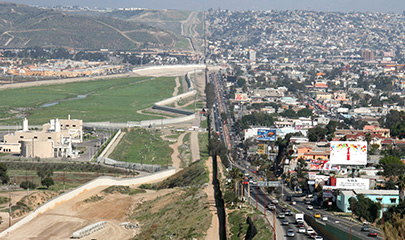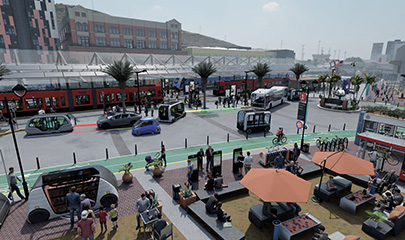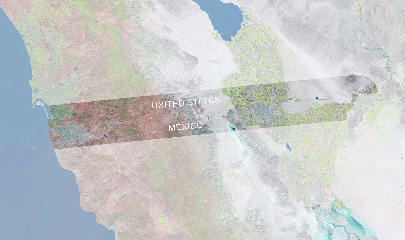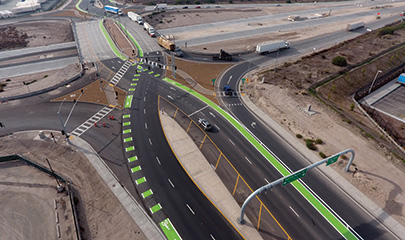Located along the U.S.-Mexico border, we are part of a binational megaregion that benefits from a rich economic, social, historical, and cultural exchange through flows of people and goods crossing the international border daily.
Binational Transportation
Transportation infrastructure in the border region is critical to Mexico and the United States. San Diego and the rest of Southern California are home to major U.S.-Mexico trade corridors where goods pass through the region to markets throughout the country and the world. Interregional commuting patterns and general travel also significantly affect our transportation systems.
Binational coordination and planning efforts include transportation infrastructure planning, forecasting, and data collection. The 2021 Regional Plan includes border-related transportation projects to accommodate the dynamic border transportation system. Such projects include improving multi-modal access to border crossings, expanding freight rail service, and coordinating commercial vehicle crossings.
SANDAG works with government agencies, businesses, universities, and nongovernmental organizations on both sides of the border to maintain an efficient transportation system to facilitate the movement of goods and people throughout the California-Baja California region.
Binational Economic Development
The San Diego region, combined with neighboring counties and northern Baja California, has the necessary scale and diversity to compete in the global marketplace. By taking advantage of our geographic location and shared resources, the San Diego-Baja California region has great potential to succeed in highly competitive international markets. Likewise, the region recognizes its ties to its neighbors to the north, east, and south to access domestic and international marketplaces. Therefore, the 2021 Regional Plan calls to strengthen the position of the greater interregional and binational area.
Impacts of Border Delays at California-Baja California Ports of Entry
In 2021, SANDAG, in partnership with the California Department of Transportation (Caltrans) and the Imperial County Transportation Commission (ICTC), completed the Impacts of Border Delays at California-Baja California Land Ports of Entry study.
This study assesses the economic and air quality/climate impacts caused by border delays at California-Baja California Ports of Entry (POEs): San Ysidro- Puerta México, Otay Mesa-Mesa de Otay, Tecate-Tecate, Calexico West-Mexicali I, Calexico East-Mexicali II, and Andrade-Los Algodones. The study also estimates future impacts considering planned border infrastructure investments, including the Otay Mesa East-Mesa de Otay II POE.
The study includes recommendations for reducing border delays and associated impacts, including further investment in POE infrastructure and physical capacity, strategies for improving operations, enhancing transportation access and services connecting to a POE, and a long-term strategy for supporting binational coordination and planning. These recommendations also align with the State of California goals and objectives noted in planning efforts, such as the 2016 California Sustainable Freight Action Plan, the 2020 California Freight Mobility Plan, and the 2021 California-Baja California Border Master Plan.

























